Info
Subfamily: Chloridoideae
Genus etymology: Chloris = Goddess of vegetation [Greek], generally used to refer to a pale green color
Species etymology: radiata = "spoke possessing" [Latin] refering to the inflorescence branches radiating like the spokes of a wheel
Photosynthetic type: C4 (warm season)
Nativity: naturalized - accidental
First recorded in Hawaiʻi: 1851
Map
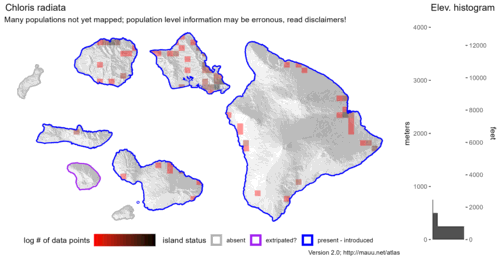

Inflorescence
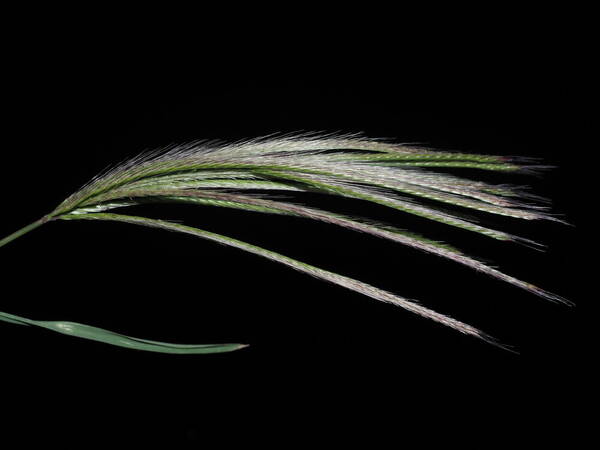
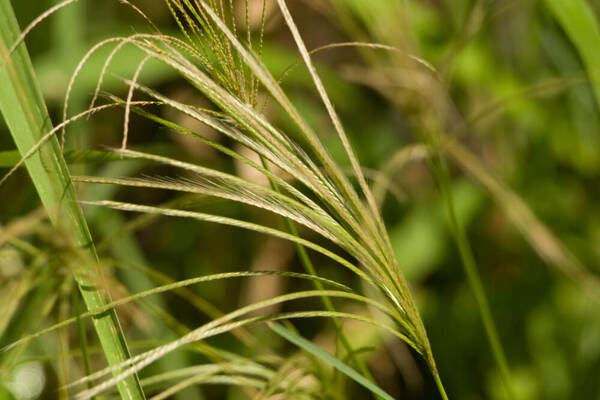
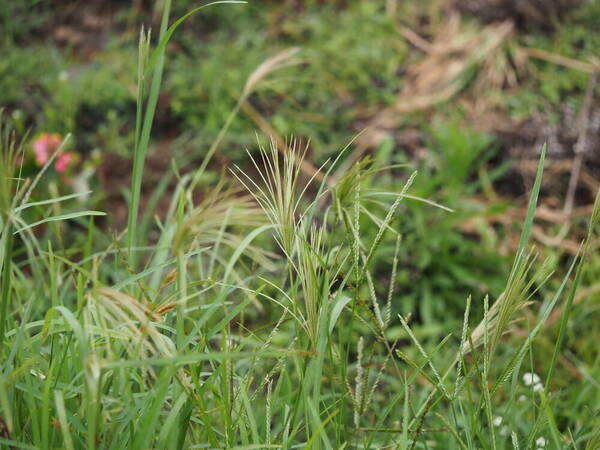
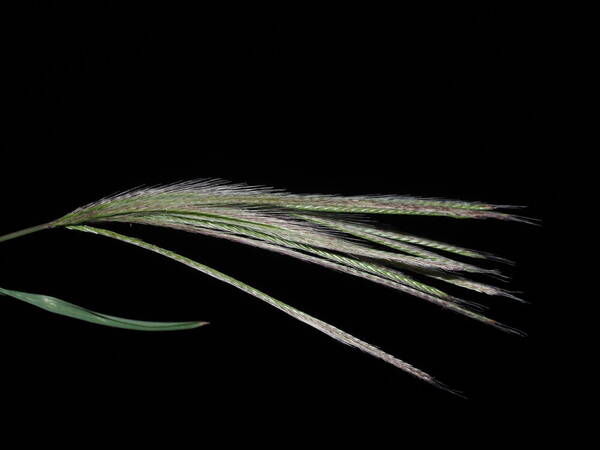
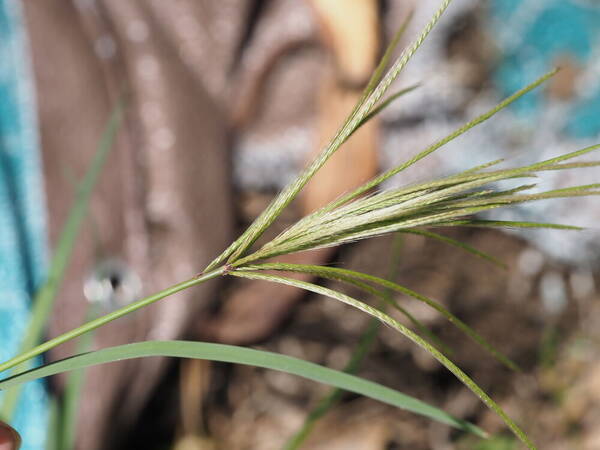
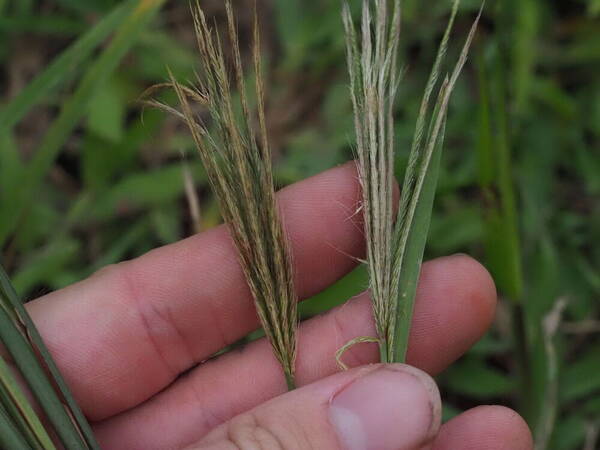
Plant
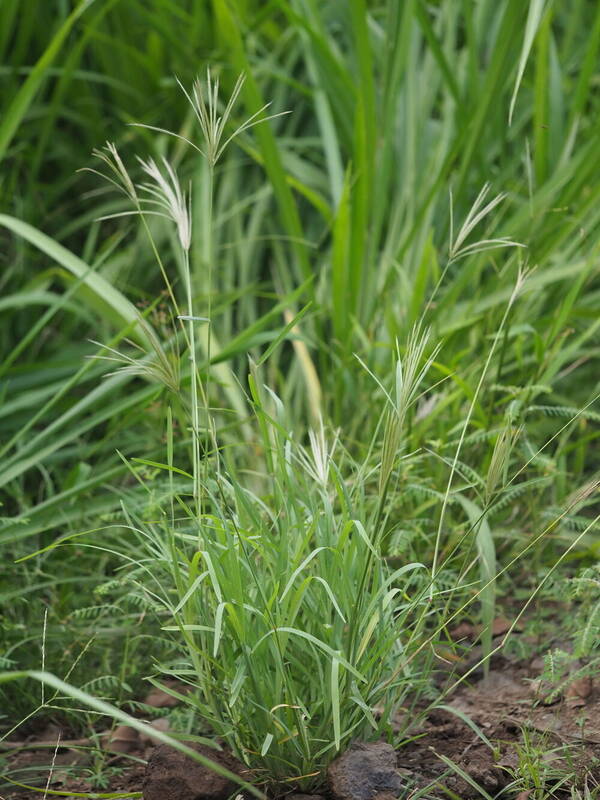
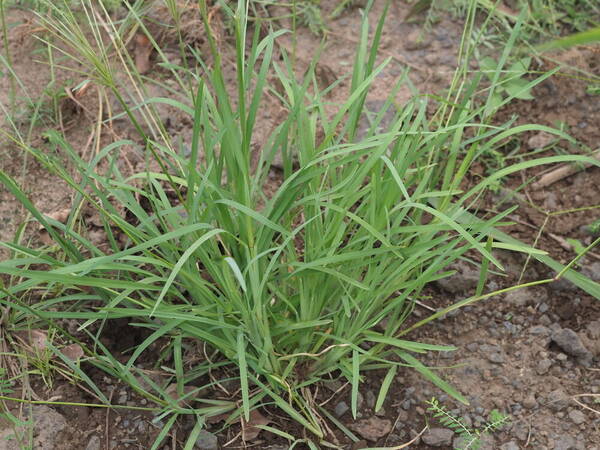
Habit
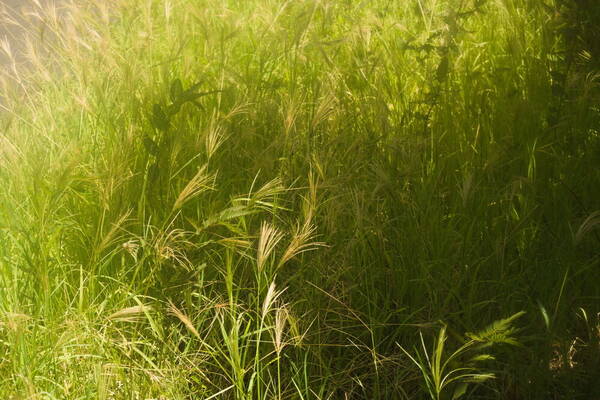

Spikelets
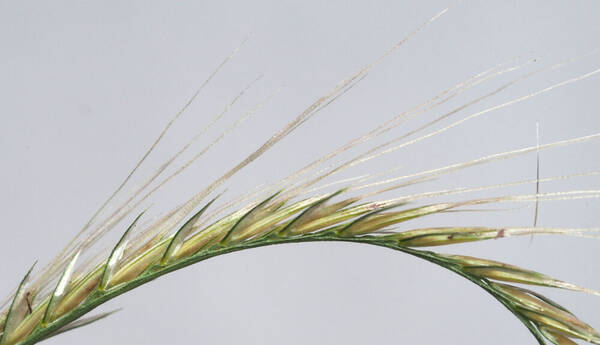
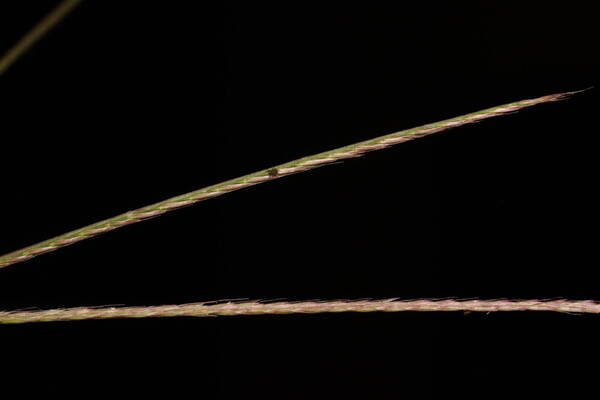
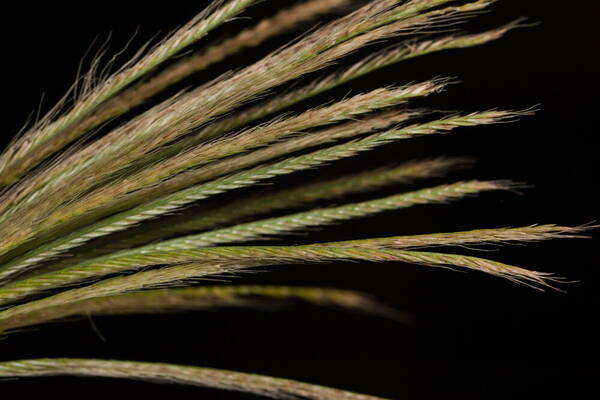
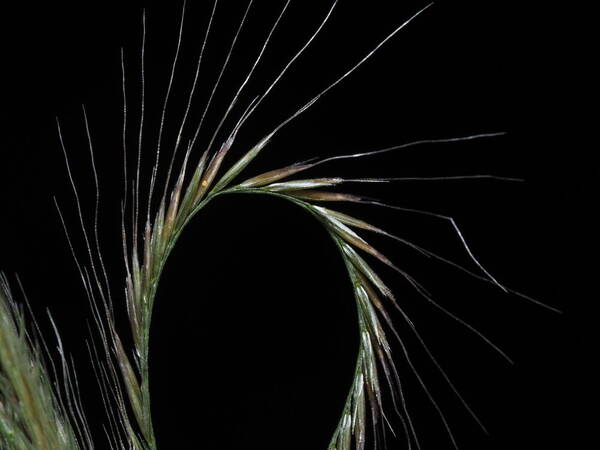

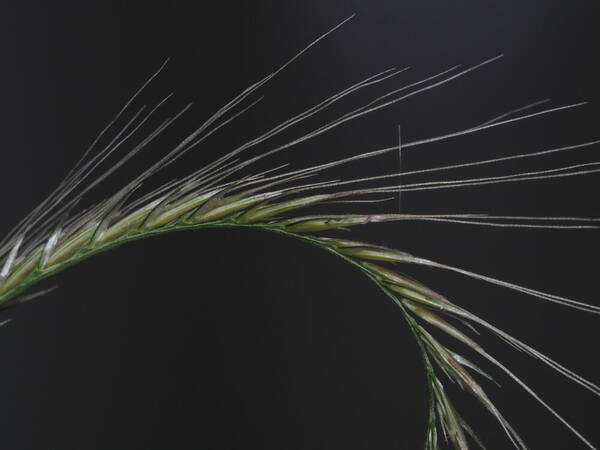
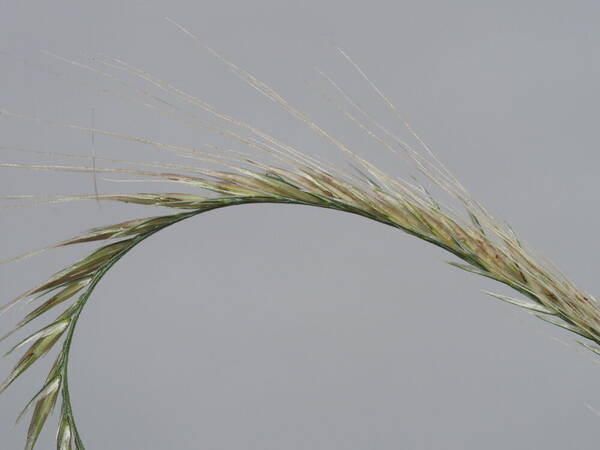
Description
Plants annual; with dense fibrous root growth, not stoloniferous. Culms 30-60 cm, erect or decumbent, occasionally rooting at the lower nodes. Sheaths usually glabrous, occasionally pilose; ligules membranous, shortly ciliate; blades 10-30 cm long, to 10 mm wide, sometimes with long basal hairs, usually pilose elsewhere, occasionally glabrous or scabrous. Panicles with 5-15, evidently distinct branches in 1-2(3) whorls; branches 4.5-8 cm, spikelet-bearing to the base, with 11-15 spikelets per cm distally. Spikelets with 1 bisexual and 1 sterile floret. Lower glumes 0.7-1.6 mm; upper glumes 2-2.7 mm; lowest lemmas 2.8-3.3 mm long, 0.4-0.6 mm wide, lanceolate to elliptic, sides not conspicuously grooved, mostly glabrous, margins shortly ciliate distally, hairs less than 1 mm, apices awned, awns 6-13 mm; second florets 0.4-0.7 long, about 0.1 mm wide, borne on an equally long or longer rachilla segment, not or inconspicuously bilobed, awned, awns 3-5 mm. Caryopses 1.4-1.5 mm long, 0.3-0.4 mm wide, ellipsoidal. 2n = 40.
(Description source: Barkworth, M.E., Capels, K.M., Long, S. & Piep, M.B. (eds.) 2003. Flora of North America, north of Mexico. Volume 25. Magnoliophyta: Commelinidae (in part): Poaceae, Part 2. Oxford University Press, New York. 783 pp. http://floranorthamerica.org/Chloris_radiata )
Loosely tufted annuals; culms decumbent, 25-60 cm tall, glabrous, often purplish at nodes, usually many-branched at base. Sheaths 4-7 cm long, compressed keeled, glabrous or scaberulous, margins usually hyaline; ligule membranous, 0.5-1 mm long, usually lacerate; blades 5-15 cm long, 3-6 mm wide, upper surface retrorsely scabrous and usually sparsely longpilose, marginal nerves thick, apex obtuse. Inflorescences silvery or purple-tinged, solitary, terminal, composed of 1-2 closely spaced whorls of lax spikes, each slender, 3-7 cm long, ascending to erect, pubescent at base, rachis puberulent; spikelets 2-flowered, ca. 3 mm long (excluding awns); glumes narrow, acuminate, keeled, apiculate, with 1 conspicuous scabrous green nerve, first glume 1.2-1.5(-2) mm long, second glume 2-2.5 mm long; first lemma ca. 3 mm long, narrow, compressed, shortpilose at base, margins slightly involute and short-pilose at apex tip, apex acute, bifid, awn slender, 7-10 mm long; palea acute, 2- 2.5 mm long; rudiment of 1 sterile floret nearly included within margins of fertile lemma, 0.5-1 mm long, narrow, acute, awn slender, 2-4 mm long. Caryopsis reddish brown, fusiform, trigonal, 1.5-2 mm long. [2n = 40.]
(Description source: O’Connor, P.J. 1990. Poaceae, pp. 1481–1604. In: Wagner W.L., Herbst D.R. & Sohmer S.H. (eds.)., Manual of the flowering plant of Hawaiʻi. Vol. 2. University of Hawaii Press & Bishop Museum Press, Honolulu )